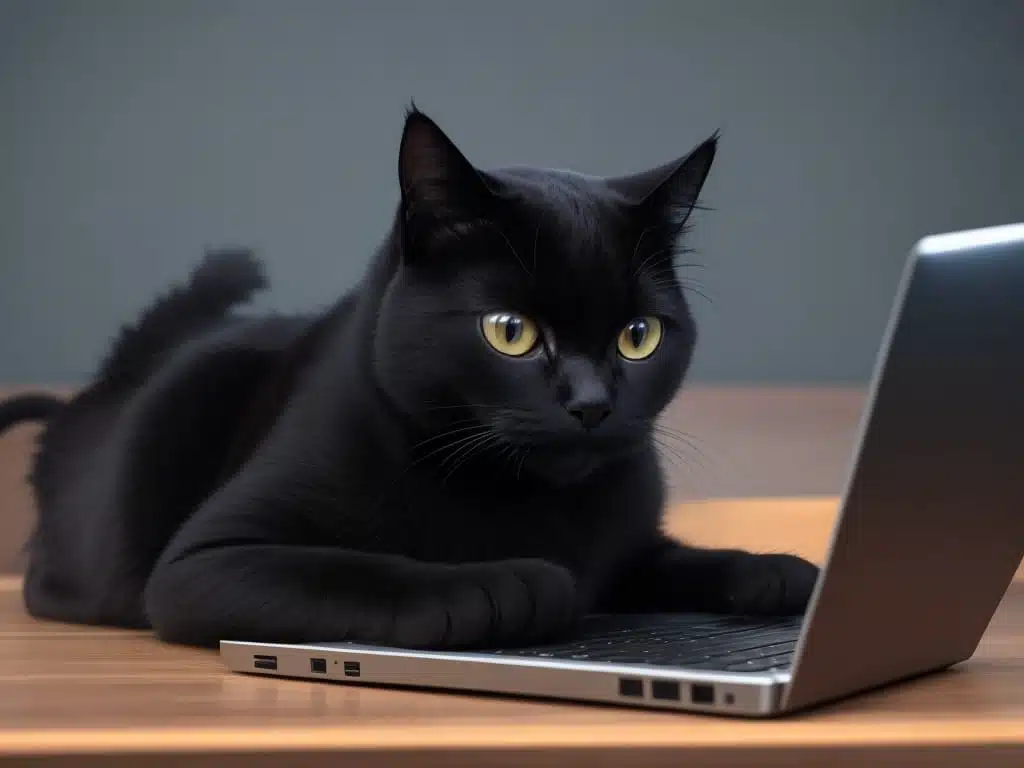
Introduction
Throughout history, humans have linked black cats to enigma and fascination, frequently positioning them as focal points in superstitions, witchcraft, and folk tales. From ancient civilizations to modern pop culture, these feline creatures have captured our imaginations and sparked curiosity. In this post, we will explore the historical, cultural, and scientific reasons behind why people call black cats “voids.”
Why Are Black Cats Called Voids?
Historical and Cultural Beliefs

Ancient Beliefs
Ancient Egyptians revered cats and considered them sacred beings. The goddess Bastet, often depicted as a lioness or a domestic cat associated with protection and fertility, viewed black cats, in particular, as symbols of good fortune and prosperity.
However, During medieval Europe, a sinister shift occurred in how people viewed them. They started connecting these felines with witchcraft, firmly convinced that they served as companions to witches. This belief stemmed from the idea that witches could transform into black cats or use them as companions in their magical practices.
Witchcraft and Black Cats


In folklore, the tie between witches and black cats is firmly embedded. People believed they possessed supernatural abilities and could aid witches in their spell casting. Some even thought black cats were witches, able to shape-shift into feline form.
During the witch trials of the 16th and 17th centuries, the belief linking them to witchcraft instigated a widespread panic. Thousands of innocent cats, regardless of their color, fell victim as people desperately tried to eliminate the perceived threat of witchcraft.
Symbolism

Mysticism and Magic
People have long regarded black cats as symbols of mysticism and magic. Their mysterious charm is accentuated by the smooth black coats, penetrating gazes, and elegant gestures they possess. In the occult, Among various practices, witchcraft or mysticism are the ones that are seen as familiars or companions often.
Positive Symbolism
Despite the negative meanings linked to black cats, it’s crucial to recognize that numerous cultures hold them in high regard. For instance, in Japanese folklore, They are considered good luck and bring prosperity to their owners. Similarly, in Scottish folklore, a black cat appearing on your doorstep is a sign of protection.
Scientific Explanations

Genetics
Genetic factors mainly dictate the black fur of cats. Certain genes, such as the melanistic gene, can cause cats to have entirely black coats. This genetic difference plays a significant role in their abundance among the feline population.
The color of a cat’s fur is determined by its genetics. The gene responsible for coat color in cats is known as the melanocortin 1 receptor (MC1R) gene. This gene controls the production of the pigment melanin, which gives color to a cat’s fur, eyes, and skin. There are two types of melanin: eumelanin, which produces a black or brown color, and phaeomelanin, which produces a red or yellow color.
The MC1R gene has several different variations, or alleles, that can affect the color of a cat’s fur. The allele for black fur is known as the non-agouti allele, which causes the cat to produce only eumelanin. This results in a black coat, regardless of the cat’s other genetic factors.
Moreover, for a cat to be solid black, both parents must have the black color gene present. The genes that determine fur color are called alleles and the black allele is known as B. The most dominant fur color for cats is tabby and for a cat to not have a tabby appearance a recessive (a) gene needs to be present called a non-agouti.
It’s worth noting that the genetics of coat color in cats is complex and not fully understood yet. But what we do know is that the black coat color is determined by the presence of the non-agouti allele in the MC1R gene.
Camouflage
In the wild, black fur gives cats a survival edge. Their dark color helps them blend into their environment, offering concealment from predators and prey. This natural camouflage proves invaluable during nighttime hunts, allowing them to move stealthily and go unnoticed.

Pop Culture References
Literature and Movies

They have left an indelible imprint on literature and cinema, frequently symbolizing enigma and fascination. Edgar Allan Poe delves into the depths of human darkness in his eerie narrative, ‘The Black Cat,’ using a black feline as a powerful metaphor. In movies, characters like Salem from ‘Sabrina the Teenage Witch’ have become iconic representations of them.
Internet Culture
The internet has played a significant role in celebrating them. People inundate social media platforms with charming images and videos featuring these captivating beings. Black Cat Appreciation Day, observed on August 17th each year, is an opportunity to recognize and share their beauty.

Myths vs. Reality
Debunk Superstitions

It’s essential to debunk common superstitions surrounding them. Despite common misconceptions, they are not indicators of misfortune or harbingers of negativity. They are cats with unique fur coloration, deserving of love and care like any other feline.
Conclusion
They have a rich and complex history connected with old beliefs, cultural symbolism, and scientific explanations. Although they have been associated with superstitions and witchcraft, it’s important to appreciate them beyond these myths. Why do people call black cats ‘voids’? Black cats are fascinating creatures, each with their special behaviors and charms. Let’s celebrate and embrace these ‘voids’ for the magnificent beings they indeed are.
Have you ever pondered the reason behind the common reference to black cats as “voids”? Now, let’s explore the origins of this intriguing nickname. Additionally, we invite you to share your experiences with these captivating felines. Alternatively, consider the possibility of welcoming one into your home. By embracing and cherishing them, we can not only dispel outdated beliefs but also ensure that these incredible creatures receive the affection and attention they rightfully deserve.





